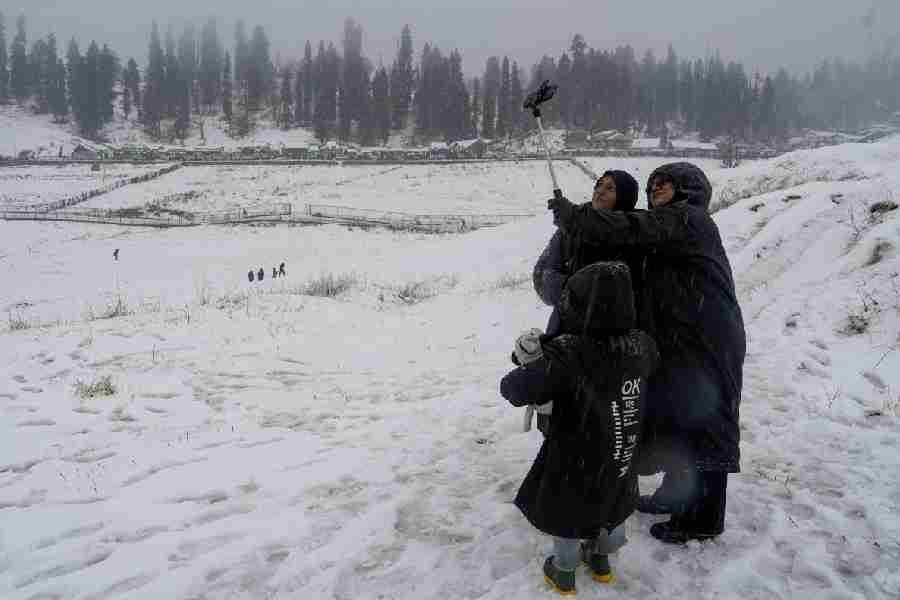For Shakira, 2022 was a year of heartbreak. Decades of hit singles and groundbreaking Latin-pop crossovers couldn’t insulate the Colombian pop star from personal upheavals. In the glare of celebrity coupledom, she broke up with the soccer player Gerard Piqué, her partner for 11 years and the father of her two sons, Milan and Sasha. Her father was hospitalized twice for a fall that caused head trauma; he went on to require further brain surgery in 2023.
Shakira was also facing charges of tax evasion in a long-running case disputing whether she had lived primarily in Spain from 2012 to 2014; she declared residency there in 2015. Last November, she settled for a fine of 7.5 million Euros (about $8.2 million), citing “the best interest of my kids.” Just days earlier, Shakira had collected the Latin Grammy for song of the year for Shakira: Bzrp Music Sessions, Vol. 53, a collaboration with the Argentine producer Bizarrap with wordplay clearly aimed at Piqué and his girlfriend.
The song was one of a string of singles Shakira released that referred directly to the breakup: the sarcastic Te Felicito (I Congratulate You); the regretful Monotonía (Monotony); the Bizarrap session, Acróstico, a ballad promising her children that she’d stay strong; and TQG (Te Quedó Grande, roughly translated as I’m Too Good for You), a taunting reggaeton duet with the Colombian star Karol G, who had been through her own public breakup. TQG has racked up more than a billion streams.
Those songs reappear on Shakira’s first album since 2017, Las Mujeres Ya No Lloran (Women No Longer Cry). All but one of its tracks deal with romantic ups and (mostly) downs, honed into crisp, tuneful pop structures. The LP continues Shakira’s career-long penchant for pulling together music and collaborators from across the Americas, dipping into rock, electro-pop, trap, Dominican bachata, Nigerian-style Afrobeats and regional Mexican cumbia and polka. Her guests include Cardi B, Ozuna and Rauw Alejandro. Not one of them upstages Shakira, who’s playful or raw as each moment demands.
Shakira spoke about the album from her white-walled kitchen at her home in Miami, where an air fryer sat on the counter behind her; a pet bunny in a pen was at her side. Unlike Barcelona, Miami is a hub of Latin pop where, she said, “I have the feeling I’ll be making a lot more music now.” Wearing a black tank top, with her hair in long blond waves, Shakira spoke happily and volubly about an album that, for her, was “alchemical.” These are edited excerpts from the conversation.
Does the album tell a story? In the first songs, you’re wondering how to hold on to someone. But by the end, you’re pretty angry.
There is a narrative. It’s a conceptual album without it being my initial intention. You know, no one plans on going through a breakup the way I did. And the dissolution of a family — that is probably one of the most painful things a human can experience. But it happened. If life gives you lemons, you make lemonade. That’s what I did with this album — use my own creativity to process my frustration and my anger and my sadness. I transmuted or transformed pain into productivity.
The album title, Las Mujeres Ya No Lloran, comes from the song that confronts the breakup most specifically: Bzrp Sessions No. 53.
It was the most direct one. But I started talking about what was happening to me through Te Felicito and Monotonía. In the video [for Monotonía], I come out with this hole in my chest, because that’s exactly the physical feeling that I had when I was going through my loss. I almost felt that people could see through my chest, see what was behind it. But with every song that I wrote, I was rebuilding myself. It was like putting my bones back together. That’s why I decided to go for this title, Las Mujeres Ya No Lloran — Women No Longer Cry. Crying itself will always be a mechanism of survival for human beings. It’s an important part of living. And I feel like women today, we don’t need to be told how we’re supposed to heal, how we’re supposed to lick our wounds. We are the ones who have to move on and preserve our species, preserve the survival of our offspring — of the she-wolves that we are.
One of the new songs, (Entre Paréntesis), ends with you bringing back the howl from She Wolf.
The she-wolf is all over this album. The she-wolf is what helped me rebuild myself. I had my times in which I howled at the moon, I licked my wounds. And I connected to that primal woman inside, to just sing and dance her pain away, to exorcise it. I think that women have this strength and this special intuition — this natural instinct of survival. When we really want to survive a situation, we just have to find that being within ourselves — to protect the pack.
I also found extreme support in women who have been through worse than me and that have taught me amazing lessons. Society has been, for centuries, putting us in a place as victims — since the Inquisition, when they burnt us at the stake. But I think women are rebelling against that. We just have to fight for what we want and heal in whatever way we want. At some point those tears have to transform themselves into tears of triumph.
Did your popularity, your celebrity, help get you through those rough years?
Not the fact of being a celebrity. I not only had to face the dissolution of my family — I had to do it with the journalists at my doorstep, with people talking about it, with me learning stuff from the press myself. It was really extremely painful. But my fans just know me and understand me and forgive my mistakes, and they support me, whatever decisions I make. I get emotional when I talk about it, because I honestly never thought that they would show up the way they showed up. But they have showed me the best version of myself, and they made me believe that I’m worth it and that I should go on. You know, them and my kids have definitely been the biggest help, the biggest support I’ve gotten.
I also had people who turned their backs on me — people who worked for me and betrayed me. And I had to face everything at the same time. And then my dad had a terrible accident that left him compromised neurologically. My dad has always been my best friend, so he wasn’t there to give me his best advice when I needed him the most. So it was a period of extreme pain. Only writing the songs allowed me to rebuild myself.
It’s a lot of changes to go through.
My essence remains the same. I think that deep inside I’m the same little girl from Barranquilla. I’m ruled by the same principles that were ingrained in me since a very early age. But my mind, my opinions, my ideas change. You know, my dogmas, my doctrines. But not my love, my moral principles and my ethics. They’re in this core. They’re preserved in formaldehyde.
Through the years, you’ve done all sorts of duets and collaborations, and you have many more on this album. How do you decide who gets to make a song with Shakira?
It’s not a premeditated process. I think every song has its own demands. For Punteria (Aiming), I thought, “How cool would it be to have a woman rapper here?” The only person who came to my mind was Cardi B. I had just met her in Paris and she seemed so nice. So I reached out, I sent her the song, and she jumped on it right away. It was actually an enormous pleasure to work with her. I find her so creative and witty and direct and unapologetically genuine.
You made two brassy songs with regional Mexican-style bands, Grupo Frontera and Fuerza Regida.
Colombia and Mexico have always had really close ties, and it was wonderful to experiment with this genre. One of the best studio sessions that I’ve ever had was with Grupo Frontera. I had just come from surfing in Malibu, and I went to the studio with my hair still wet, and they were there. They came in with this pure, genuine energy. We jammed through this song, and it was just one of the most fun, exhilarating moments I’ve had in the recording studio — a true musician’s moment.
(The New York Times News Service)










